In the dynamic world of aquatic sports, swimming fins stand as a pivotal product, evolving continuously to meet the diverse needs of swimmers in 2024. These fins, integral to enhancing swimming techniques and speed, have undergone significant transformations in design, material, and functionality. They cater to a wide spectrum of users, from competitive swimmers seeking performance enhancement to recreational users looking for a more efficient swim. The market today offers a variety of fins, each tailored to specific swimming styles and objectives, reflecting the growing sophistication and specialization in aquatic sports equipment. As such, swimming fins not only represent a crucial tool for swimmers but also a segment with varied and expanding opportunities in the aquatic sports industry.
Table of Contents
1. Swimming fins: types and application
2. Analyzing the 2024 swimming fin market
3. Key considerations in fin selection
4. Leading swimming fin models of 2024
5. Conclusion
Swimming fins: types and applications
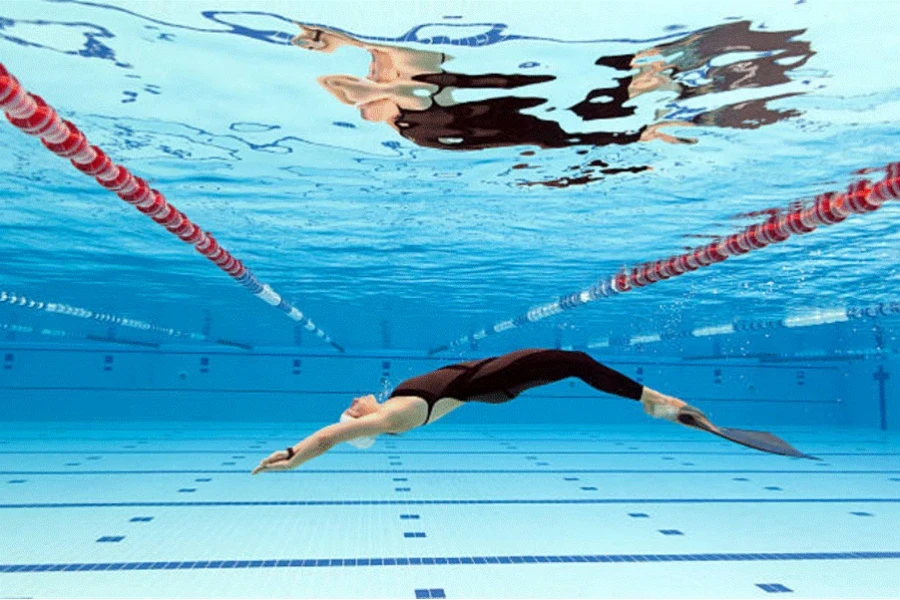
In the realm of aquatic sports, swimming fins have emerged as a multifaceted tool, each type designed with specific purposes and user profiles in mind. The diversity in fin types reflects the nuanced requirements of different swimming activities, ranging from competitive swimming to leisurely snorkeling.
Differentiating between fin types
Swimming fins can be broadly categorized into three main types: short blade fins, long blade fins, and monofins, including specialized variants. Short blade fins are known for their compact design, which aids in building leg strength and improving kick frequency. This type of fin is particularly beneficial for swimmers focusing on refining their technique and enhancing agility in the water. They are often the preferred choice for training sessions, where the emphasis is on developing muscle endurance and speed.
On the other hand, long blade fins are characterized by their extended length, which offers a significant increase in propulsion. This makes them ideal for divers and long-distance swimmers who require sustained speed and power. The long blade design facilitates a more pronounced, slower kick, allowing for greater thrust and glide through the water. These fins are often favored by open water swimmers and divers who need to cover larger distances with less effort.
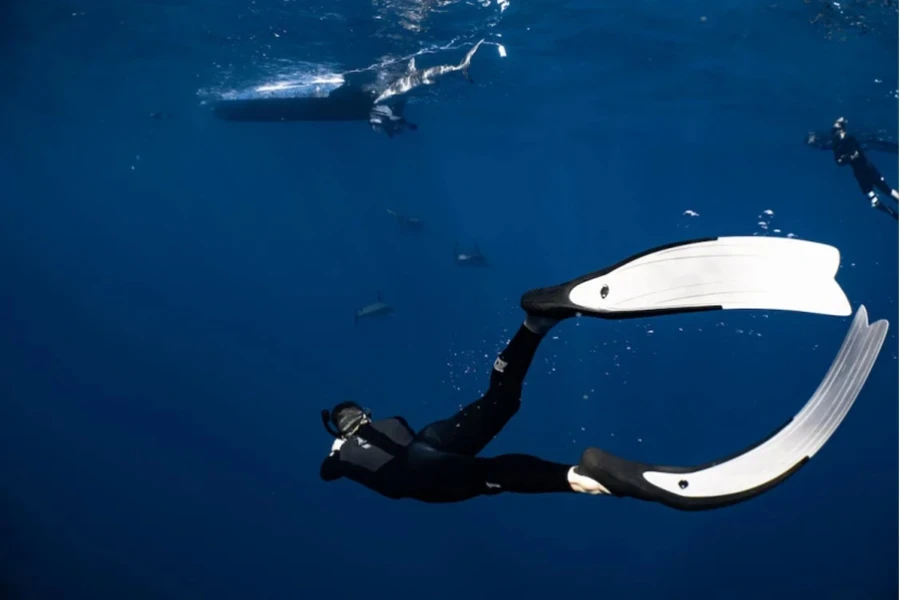
Monofins and specialized fins represent a unique category, designed for specific swimming styles or activities. Monofins, which bind both feet together, are primarily used in synchronized swimming and for training the butterfly stroke. They encourage a whole-body undulation and help in developing core strength. Specialized fins, such as those designed for breaststroke training, have distinct features like shorter, angled blades that accommodate the unique movement of the stroke.
Impact of material and design on performance
The material and design of swimming fins significantly influence their performance and suitability for different swimming activities. The two primary materials used in fin construction are silicone and rubber, each offering distinct advantages. Silicone fins are known for their flexibility, comfort, and reduced likelihood of causing blisters, making them a popular choice for regular swimmers. Their softer texture and lightweight nature facilitate a more comfortable swimming experience, especially for longer durations.
Rubber fins, in contrast, are typically sturdier and provide more resistance in the water. This resistance is beneficial for strength training, as it requires more effort from the swimmer, thereby enhancing leg muscle development. Rubber fins are often preferred for their durability and ability to withstand rigorous use, making them a practical choice for training environments.
Design innovations in swimming fins have also played a crucial role in enhancing performance. Recent advancements include hydrodynamic enhancements that reduce drag and improve water flow around the fin. This results in a more efficient kick and better propulsion. Additionally, comfort has been a significant focus, with designs incorporating features like ergonomic foot pockets and adjustable straps to ensure a secure and comfortable fit. These innovations not only enhance the swimming experience but also cater to the diverse needs and preferences of different swimmers.
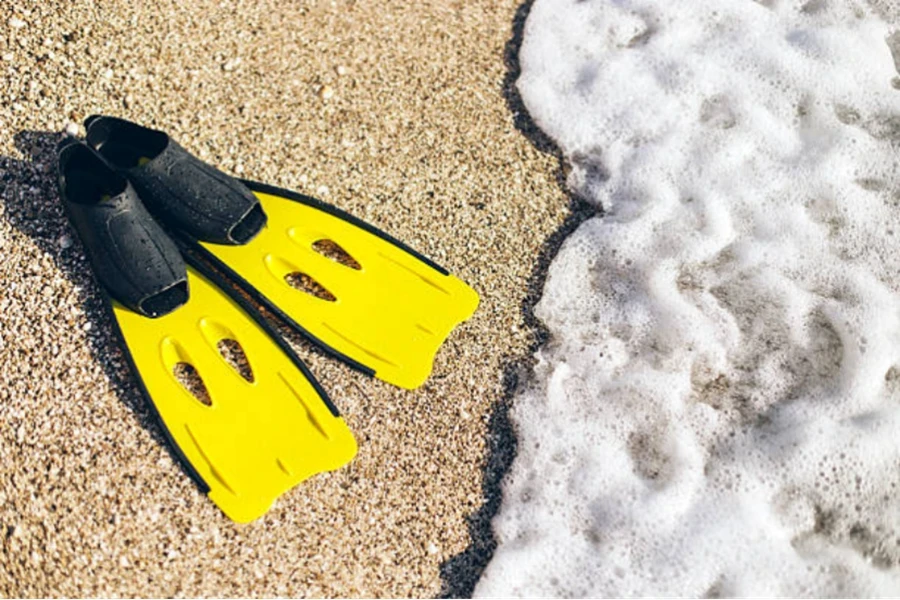
In summary, the selection of swimming fins requires a careful consideration of the type, material, and design, each playing a pivotal role in determining the fin’s suitability for specific swimming activities and user preferences. The evolving designs and materials in swimming fins reflect the ongoing innovation in aquatic sports equipment, catering to a wide range of swimming styles and objectives.
Analyzing the 2024 swimming fin market
The swimming fin market in 2024 is characterized by a dynamic interplay of evolving consumer preferences and market trends. This section delves into the current shifts in demand and the market’s growth trajectory, underpinned by data insights and projections.
Current market trends and consumer preferences
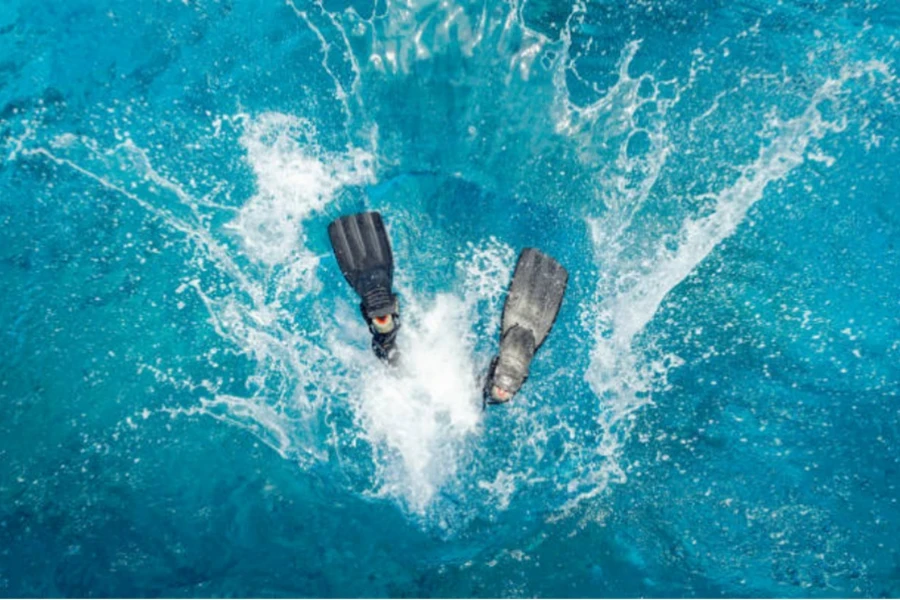
A notable shift in the swimming fin market is the transition from predominantly competitive use to increased recreational application. This change reflects a broader trend in aquatic activities, where leisure and fitness swimming are gaining prominence alongside competitive swimming. The market is adapting to these shifts, with manufacturers diversifying their product lines to cater to a wider range of swimmers, from professionals to casual enthusiasts.
Concurrently, there is a rising consumer awareness and preference for sustainability and eco-friendly materials in swimming fins. This trend aligns with the global movement towards environmentally responsible products, influencing consumer choices and driving manufacturers to innovate with sustainable materials. The use of recycled plastics and eco-friendly rubber variants in fin production is becoming more prevalent, catering to the environmentally conscious segment of the market.
Market data insights: sales, growth, and projections
The swimming fin market is experiencing robust growth, with projections indicating a continued upward trajectory. According to a market analysis on LinkedIn, the global swim fins market is expected to reach a value of over $500 million by 2025. This growth is driven by the increasing popularity of swimming as both a recreational and fitness activity.

The market is highly competitive, with key players like Speedo USA, Cressi, and FINIS leading the charge. These companies are known for their commitment to quality, innovation, and market presence. Speedo USA, for instance, has a long history in the swimwear industry and is recognized for its high-quality materials and ergonomic design. Cressi and FINIS are also notable for their durable and performance-enhancing features.
In terms of regional market share, the Asia-Pacific region is expected to dominate, with a projected market share valuation of approximately 40%, closely followed by North America with around 30%. Europe is also a significant player, projected to hold a market share of 25%. The USA and China are key contributors within these regions, showcasing robust growth in swim fins adoption.
In conclusion, the swimming fin market in 2024 is a landscape of innovation, sustainability, and expanding consumer base. With the rise in popularity of aquatic activities and the shift towards eco-friendly products, the market is poised for continued growth and diversification.
Key considerations in fin selection
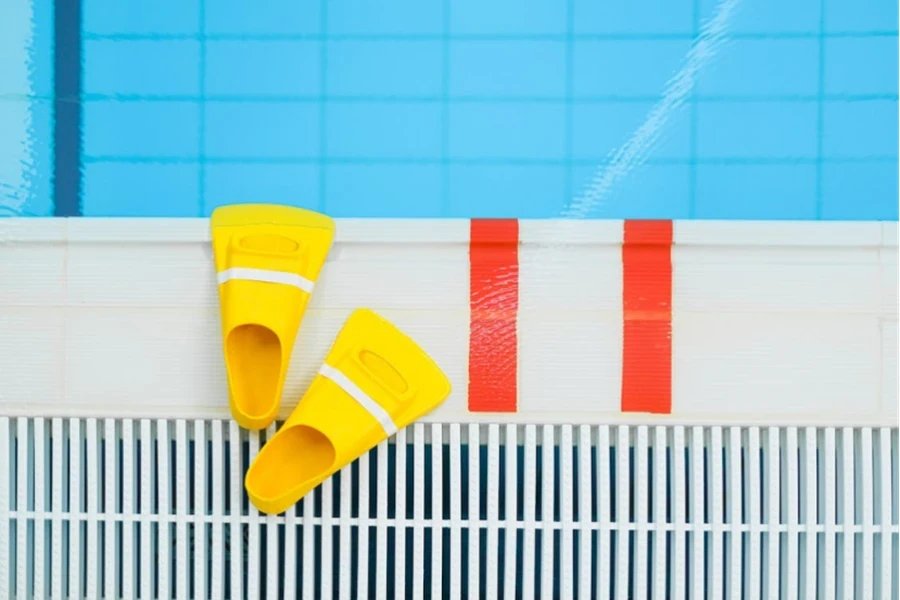
When selecting swimming fins, several key factors must be considered to ensure optimal performance and comfort. This section delves into the specifics of size and fit, as well as the balance between cost and quality, providing detailed insights and practical advice.
Size and fit: ensuring optimal performance and comfort
The size and fit of swimming fins are critical for their effectiveness. Fins come in different blade lengths, each serving a specific purpose. Short blade fins are ideal for developing a faster kick and proper kicking technique, making them a popular choice among freestylers and backstrokers. In contrast, long blade fins are better suited for young or recreational swimmers, as they help improve ankle flexibility and leg endurance.
Material and stiffness of the fin blade are also key considerations. Stiffer blades offer more resistance, which can be beneficial for building leg strength, but may also lead to a slower kick when not using fins. Softer materials provide a more natural movement in the water. The design of the fins, including features like channels to direct water flow, can further enhance the swimming experience.
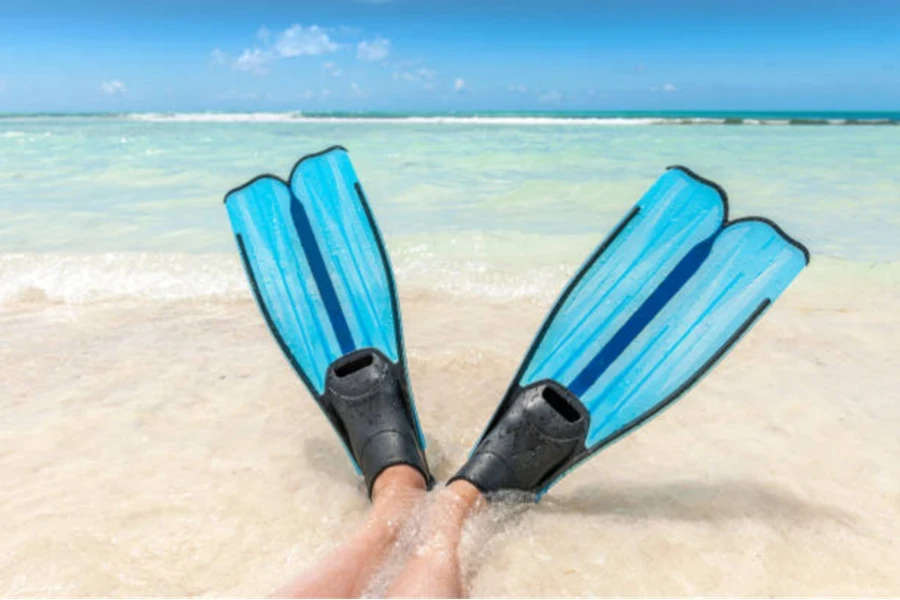
Fit is crucial, with options ranging from full foot to open heel designs. Full foot fins, which encase the entire foot, require accurate sizing to prevent discomfort and blisters. Open heel fins, with a strap across the back of the ankle, offer a more adjustable fit and can reduce rubbing on the heel.
Balancing cost and quality: a retailer’s perspective
From a retailer’s standpoint, striking a balance between cost and quality is essential. High-quality fins made from durable materials can be a more cost-effective choice in the long run, due to their longevity and resistance to pool chemicals. However, the target market’s willingness to invest in higher-priced products must be considered.
Mid-tier fins, typically priced around $40, offer a good balance of affordability and quality, suitable for regular use. These fins avoid the drawbacks of cheaper, low-quality options that may not endure frequent use.
In summary, when selecting swimming fins, it’s important to consider the specific needs of different user groups in terms of size, fit, and material. Retailers should evaluate their target market’s preferences to make informed decisions that cater to customer needs while ensuring profitability. The right choice in fins can significantly enhance the swimming experience, whether for training, competition, or leisure.
Leading swimming fin models of 2024

In 2024, the swimming fin market showcases several standout models, each catering to different needs and preferences. This section highlights the top models and their unique features, followed by a comparative analysis to distinguish what sets these models apart.
Highlighting top models and their features
Arena Powerfin Pro: This model is designed with the competitive swimmer in mind. Its innovative design includes a sloping surface and hydrodynamic slits, enhancing propulsion and allowing for a more natural kick cycle. The fins are favored for their ability to improve leg strength and flexibility, making them a top choice for professional swimmers.
Innovative Design: The Arena Powerfin Pro has a sloping surface and hydrodynamic slits on the top, enhancing leg kick speed and control.
Open Heel Design: This feature ensures maximum ankle flexibility, allowing for a faster upward motion and a more powerful downward leg kick.
Vertical Leg Kick Training: Using these fins vertically can improve the underwater phase of swimming.
Specific Features:
Inclined short blade for maximum forward thrust and high-frequency kick.
Special notches on the bottom ribs for faster kicks and side rails for better control.
Customized for left and right foot, enhancing flexibility.
Material: Made of 100% silicone, reducing the risk of blisters and ensuring comfort.
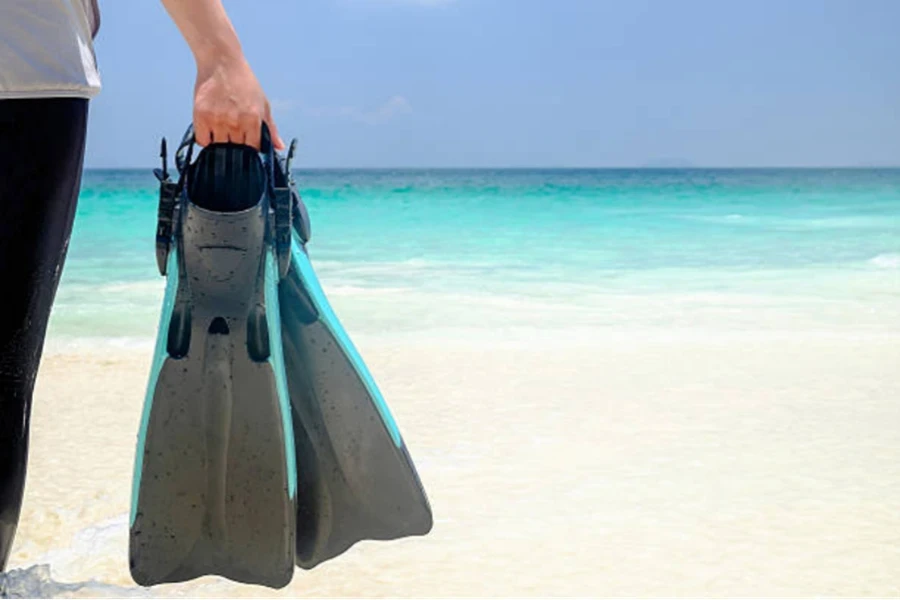
Finis Zoomers Gold: Ideal for fitness and training, the Zoomers Gold fins are recognized for their short blade design. This design encourages shorter, faster kicks, aiding in cardiovascular conditioning and speed training. The fins are formulated from soft natural rubber, ensuring increased comfort and a secure fit. They are particularly suitable for swimmers looking to build endurance and improve their kicking technique.
Short Blade Design: The Zoomers Gold fins feature a short blade, which is easy on the down-kick and provides minimal forward propulsion on the up-kick, ensuring the swimmer works hard during training.
Foot Pocket Formulation: Made from soft natural rubber, the foot pocket of these fins is designed for increased comfort, accommodating a range of foot sizes and shapes.
Encourages Faster Kicks: The short blade design of the fins encourages shorter, faster kicks, which is beneficial for building speed and improving propulsion through the water.
Suitability: These fins are versatile and suitable for swimmers of all ages and levels, making them a popular choice for both training and fitness swimming.
Price: The Zoomers Gold fins are priced at AUD 58.00, indicating their positioning in the mid-range market segment.

Aqua Sphere Alpha Fins: These fins are an excellent choice for beginners. Made from buoyant material, they help maintain body position in the water, making it easier for new swimmers to learn proper technique. The fins’ unique design also reduces strain on the ankles, making them a comfortable option for those just starting their swimming journey.
Manufacturing Material: The Aqua Sphere Alpha Fins are unique as they are the only swim fins manufactured with injection-molded EVA foam.
Weight and Comfort: The use of ultra-soft EVA foam makes these fins approximately 70% lighter than traditional swim fins, offering unparalleled comfort.
Buoyancy and Performance: The buoyant material of these fins helps improve a swimmer’s body position while activating their kick.
Price: The Aqua Sphere Alpha Fins are priced at €40.00, positioning them in a competitive market segment.
Size Range: These fins are available in a wide range of sizes, from XXSmall (1-3) to XXLarge (12.5-13.5), catering to a diverse range of foot sizes.
Comparative analysis: what sets these models apart
Each of these models has unique selling points tailored to specific user groups. The Arena Powerfin Pro stands out for its advanced design, catering to the needs of competitive swimmers seeking to enhance their performance. The Finis Zoomers Gold, with its short blade and comfortable fit, is ideal for swimmers focused on fitness and training. In contrast, the Aqua Sphere Alpha Fins, with their buoyant material and beginner-friendly design, are perfect for those new to swimming.
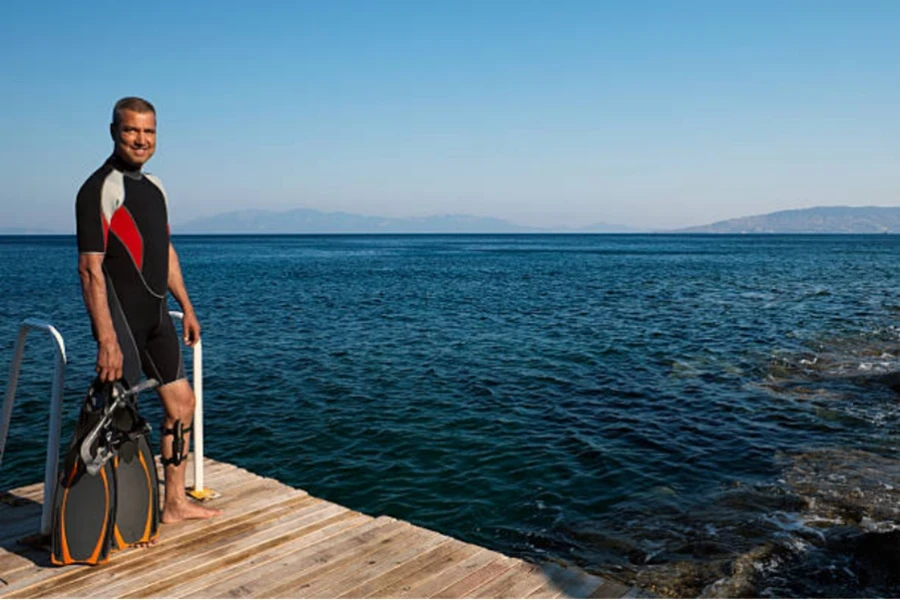
This comparative analysis reveals that the choice of swimming fins depends heavily on the user’s level and goals. Whether it’s for competitive swimming, fitness training, or learning the basics, there is a fin model in 2024 that meets the specific needs of different swimmers. For retailers, understanding these distinctions is key to catering to a diverse customer base and ensuring satisfaction across various swimming levels and preferences.
Conclusion
The swimming fin market in 2024 presents a diverse array of options, each tailored to different swimming needs and preferences. From the high-performance Arena Powerfin Pro to the versatile Finis Zoomers Gold and the beginner-friendly Aqua Sphere Alpha Fins, the market caters to a wide spectrum of swimmers. For online retailers, understanding these nuances is crucial. An informed selection that considers the unique features, target user groups, and market trends can significantly impact customer satisfaction and business success in this specialized sector. This insight into the swimming fin market underscores the importance of a strategic approach to product selection and customer engagement.




